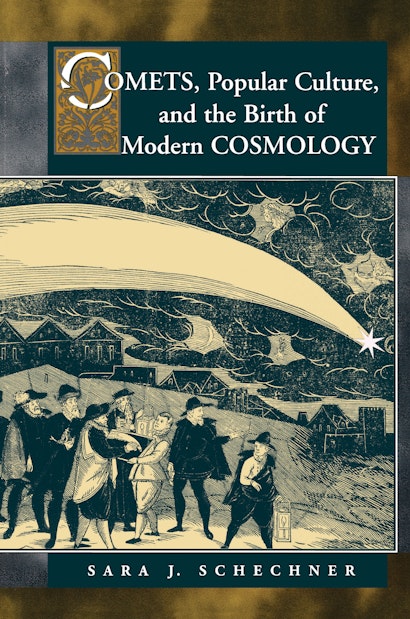In a lively investigation into the boundaries between popular culture and early-modern science, Sara Schechner presents a case study that challenges the view that rationalism was at odds with popular belief in the development of scientific theories. Schechner Genuth delineates the evolution of people’s understanding of comets, showing that until the seventeenth century, all members of society dreaded comets as heaven-sent portents of plague, flood, civil disorder, and other calamities. Although these beliefs became spurned as “vulgar superstitions” by the elite before the end of the century, she shows that they were nonetheless absorbed into the science of Newton and Halley, contributing to their theories in subtle yet profound ways.
Schechner weaves together many strands of thought: views of comets as signs and causes of social and physical changes; vigilance toward monsters and prodigies as indicators of God’s will; Christian eschatology; scientific interpretations of Scripture; astrological prognostication and political propaganda; and celestial mechanics and astrophysics. This exploration of the interplay between high and low beliefs about nature leads to the conclusion that popular and long-held views of comets as divine signs were not overturned by astronomical discoveries. Indeed, they became part of the foundation on which modern cosmology was built.
Sara J. Schechner is a scholar-in-residence at the American Institute of Physics and a research fellow at the National Museum of American History. After many years as the Curator of the History of Astronomy Collection at the Adler Planetarium & Astronomy Museum in Chicago, she is now the principal of Gnomon Research, a firm specializing in science exhibits, educational outreach, and collections-based research.
"Comet literature is extensive but, to the best of my knowledge no previous work has quite the grasp of this one. There are some books dealing with restricted subjects that seem certain to become standard references for many years to come. This is one, and it should be in every serious scientific library."—Patrick Moore, The Times Higher Education Supplement
"A work of serious scholarship that is rich in fascinating material.... Judiciously selected quotations and fifty three illustrations, some exceptionally striking, add to the pleasure of reading this very engaging story, which is filled with surprises, ironies, and fresh insights."—Michael J. Crowe, Physics Today
"Beautifully illustrated, full of fascinating quotations, and blessed with 126 pages of notes and references. I enjoyed it immensely."—David W. Hughes, Observatory
"[This book] is accurate, comprehensive, and should make an important contribution to the history of astronomy."—Donald Yeomans, Sky & Telescope
"This book is not a general history of comets. . . . [T]he author is concerned primarily with the perception of comets throughout history. It is a scholarly well-illustrated and accurate work. . . . [T]he author does a fine job."—Donald Yeomans, Nature
"Every now and again a scholar comes along who successively maps out a novel idea, and does so in a compelling way. This well-written book is assuredly one such occasion and I recommend it to every scholar, no matter what their discipline."—Noel Grey, The European Legacy

